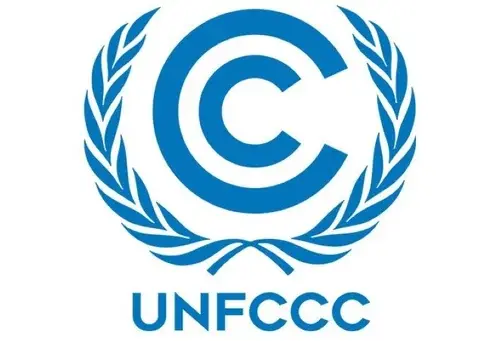Key Takeaway
Here's what's happening: The UN-designed Article 6.4 (Paris Agreement Crediting Mechanism) is moving into full implementation, creating a new class of state-certified carbon credits (A6.4ERs) that can link - through Corresponding Adjustments - directly to national climate inventories.
Why it matters for companies: CSO must build the capacity to secure supply for mid-term offset portfolios in increasingly converging compliance and voluntary markets.
Section 1: Framework Background
Concept & Purpose: Along Article 6.2. which focuses on Government to Government transactions, Article 6.4 establishes a UN authority for high-integrity carbon crediting for the private sector, replacing the Clean Development Mechanism. It issues UN-certified emission reduction credits (A6.4ERs) that can follow two path: if authorized for NDC use, CORSIA or other purposes through corresponding adjustment they become ITMOs, otherwise the become Mitigation Contribution Units (MCUs) The goal is to ensure real, permanent, and additional reductions or removals under rigorous standards.
Impact & Status: Following the 29th annual UN Climate Change Conference (COP29) in November 2024, the mechanism operationalization is progressing in 2025. The Supervisory Body has accredited national authorities in 109 host countries to drive implementation of rules on state level. Around 1,400 legacy CDM projects are under evaluation with eight approved, while >700 new project considerations have been submitted.
Section 2: Expected Legislative Changes
Upcoming Deadline: The most critical phase has begun with the Supervisory Body developing technical rules, standards, and procedures that will determine which projects qualify for A6.4ER. An interim digital registry will open for project registration, ensuring full credit traceability throughout the system. Integration with existing compliance markets is accelerating, Singapore now accepts Article 6.2 credits for up to 5% of its carbon tax obligations. A major decision outstanding in October 2025 will be the role of Nature in Article 6 and whether it could be excluded.
Regulatory Adoption: No methodologies beyond the CDM have yet been approved under Article 6.4, creating a major roadblock as new projects cannot be registered without them. The Mechanism Registry - the official system for Article 6.4 activities including issuance, transfer and cancellations - is not yet fully functional. Additionally, institutional readiness in host countries lags behind, for instance so far only nine countries have submitted host party participation requirements to the UNFCCC.
Section 3: Risks & Opportunities
Risks of Inaction: Late movers risk constrained access to high-integrity credits, especially airlines regulated under CORSIA. Prices for A6.4ERs are anticipated to be higher than similar VCM credits, exposing delayed buyers to cost escalation. As compliance and voluntary markets converge, waiting could also eliminate the ability to use the same credits for both purposes.
Benefits of Proactive Engagement: Early movers can access projects with Letters of Authorization, positioning themselves ahead of full corresponding adjustments. Companies active in compliance markets can benefit from the growing acceptance of A6.4ERs, creating flexibility across tax and trading regimes. Proactive due diligence and long-term offtakes enable firms to lock in integrity, traceability, and price certainty under the new UN-backed governance.
Conclusion – 3 Strategic Actions for CFOs/CSOs
The Paris Agreement ushered in a new era of carbon trading. Through Article 6 - and Article 6.4 in particular - countries and the private sector can collaborate in meeting Nationally Determined Contributions (NDCs) by trading carbon units. The conclusion of Article 6 at COP29 delivers a clear message: the rules are now firmly in place, providing the certainty needed for countries, investors, and corporates to advance cooperative approaches. Article 6.4 can serve as the trust layer for scaling carbon markets and driving convergence between voluntary and compliance systems.
CSO/CFOs should hence:
- Monitor UNFCCC progress on approval of methodologies and update procurement criteria and willingness to pay premiums for A6.4ERs accordingly.
-
Build a supplier map of early movers with Letters of Authorization (LoA) and prioritize engagement with project developers most likely to transition to A6.4ER eligibility.
-
Execute long-term offtake agreements with relevant A6.4ERs from projects already advancing through Article 6.4 processes.
Appendix – Sources and Further Reading:
-
UNFCCC Article 6.4 Supervisory Body overview (Accessed July 2025)
-
UNFCCC: Key rules agreed for credible climate project crediting under UN carbon market (May 2025)
-
Carbon Market Watch: First wave of Article 6 carbon credits misfire spectacularly (April 2025)
-
IETA: Using Article 6 to Unlock Finance for Climate Action (July 2025)
-
Abatable: Article 6.4: New implications for the supply and use of carbon credits (Updated June 2025)
-
Carbon Direct: COP29 & Article 6.4: A new chapter in global carbon markets (November 2024)
-
European Parliament: International carbon credits and EU climate targets (May 2025)
-
Baker McKenzie: Greenwashing Litigation Trends (July 2025)
-
UNEP-CCC: Article 6 Pipeline (Updated July 2025)
-
Carbon Mechanism Review (Summer 2025)
-
UNFCCC: Draft Standard Addressing non-permanence / reversal (July 2025)
Jérôme Cochet is the Co-Founder & CEO of goodcarbon, a platform enabling companies to achieve net-zero through high-quality carbon credits from Nature-based Solutions (NbS). With a strong background in business, marketing, and data, Jérôme previously worked at McKinsey & Company and helped scale Zalando to over €6 billion in revenue as their SVP Sales & Marketing. Driven by a passion for nature, Jérôme co-founded goodcarbon to de-risk and scale investments in Nature-based Solutions, making them a core component of corporate carbon removal strategies.

